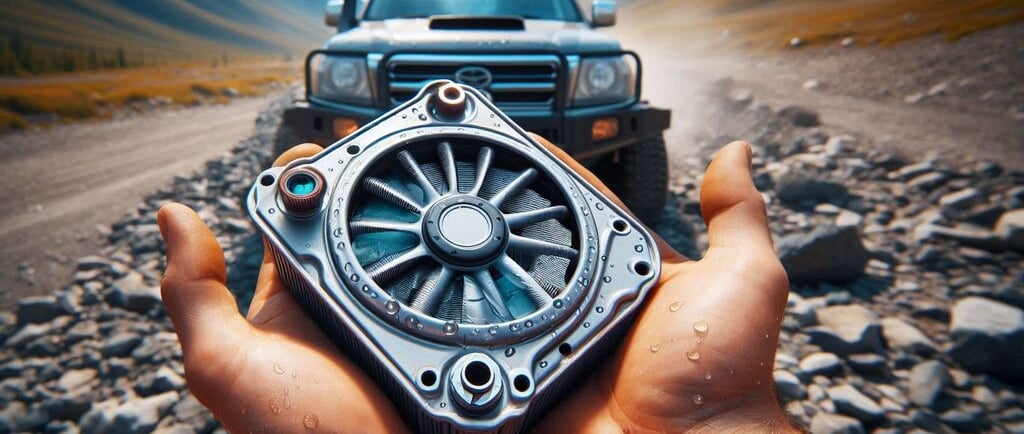Transmission Cooler: Prevents overheating by cooling transmission fluid.
When you’re driving your vehicle, the transmission is working tirelessly to shift gears and manage power.
TRANSMISSION COMPONENTS
11/12/20244 min read


The Transmission Cooler: Preventing Overheating and Protecting Your Vehicle
When you’re driving your vehicle, the transmission is working tirelessly to shift gears and manage power. But did you know that excessive heat can cause major damage to the transmission? This is where a transmission cooler comes into play. By cooling the transmission fluid, a transmission cooler prevents overheating and ensures that your vehicle’s transmission remains in optimal condition.
In this article, we’ll explore what a transmission cooler is, how it works, why it’s essential for your car’s performance, and how to maintain it for the best results. So, let’s dive in!
What is a Transmission Cooler?
A transmission cooler is a device designed to regulate the temperature of the transmission fluid, ensuring that it doesn't overheat. Transmission fluid plays a crucial role in lubricating and cooling the transmission components. However, when this fluid gets too hot, it loses its effectiveness, leading to increased friction and potential damage.
Transmission coolers help by circulating the fluid through a separate cooling system, similar to a radiator. The cooler dissipates heat from the fluid, keeping it within an optimal temperature range.
Types of Transmission Coolers
There are two primary types of transmission coolers:
Air-to-Air Transmission Cooler: This type uses air to cool the transmission fluid. It’s typically mounted in front of the vehicle's radiator and relies on airflow to reduce fluid temperature.
Air-to-Oil Transmission Cooler: This cooler uses a combination of air and oil to cool the transmission fluid. It’s often found in larger vehicles like trucks or high-performance cars, where the risk of overheating is greater.
No matter the type, the goal of the transmission cooler is always the same: to prevent overheating and prolong the life of your transmission.
Why is a Transmission Cooler Important?
A transmission cooler serves as a vital part of your vehicle’s cooling system. Without it, the transmission fluid could overheat, causing serious damage. Let’s explore the main reasons why transmission coolers are essential.
1. Prevents Transmission Overheating
Heat is one of the leading causes of transmission failure. When the transmission fluid gets too hot, it breaks down, which results in poor lubrication and inefficient operation. This can lead to slipping gears, erratic shifting, and eventually a complete transmission failure. A transmission cooler helps keep the fluid temperature in check, preventing these issues.
2. Enhances Transmission Longevity
By keeping the transmission fluid cool, a transmission cooler helps extend the lifespan of the transmission. With proper temperature regulation, the fluid maintains its ability to lubricate and protect the internal components of the transmission. This means fewer repairs and a longer-lasting transmission.
3. Improves Vehicle Performance
A properly functioning transmission cooler helps maintain smooth gear shifts and consistent performance. Overheating can cause the transmission to work harder than necessary, reducing fuel efficiency and making your car feel sluggish. With the right cooler in place, the transmission operates more efficiently, resulting in better performance and improved gas mileage.
Signs of a Failing Transmission Cooler
Like any vehicle component, transmission coolers can wear out over time. If the cooler isn’t working properly, it can lead to overheating and transmission damage. Here are some signs to watch for:
1. High Transmission Fluid Temperature
If your transmission is running hot, it’s a clear sign that the cooler isn’t doing its job. Many modern vehicles come with a transmission temperature gauge, allowing you to monitor fluid temperature. If the temperature is consistently high, it’s time to have your cooler inspected.
2. Slipping Gears
Overheating can cause the transmission fluid to lose its effectiveness, leading to slipping gears. If you notice that the gears are not shifting smoothly or the car jerks when changing gears, it might be due to a malfunctioning transmission cooler.
3. Unusual Noises
A failing transmission cooler can result in grinding or whining noises coming from the transmission. This is a sign that the components inside the transmission are overheating and not functioning properly.
4. Leaking Transmission Fluid
If you notice transmission fluid leaks around the cooler, this could indicate that the cooler has a crack or is not properly sealed. Leaks can cause a significant loss of fluid, which, in turn, can lead to overheating and transmission damage.
How to Maintain Your Transmission Cooler
To ensure that your transmission cooler works efficiently, regular maintenance is key. Here are a few tips to help you maintain it:
1. Inspect for Leaks
Regularly check the area around the transmission cooler for signs of leaks. If you notice any fluid dripping, have the cooler checked by a professional mechanic.
2. Change Transmission Fluid
Old or contaminated transmission fluid can affect the performance of the cooler. Make sure to change the transmission fluid at the recommended intervals to keep the system clean and efficient.
3. Clean the Cooler
Over time, dirt and debris can build up around the transmission cooler, restricting airflow. Cleaning the cooler regularly ensures that it can effectively dissipate heat. Be sure to follow your vehicle’s manual for the proper cleaning procedure.
4. Check the Cooler’s Condition
If your vehicle is experiencing shifting problems, high temperatures, or other transmission-related issues, it’s a good idea to have the cooler inspected. Replacing a damaged cooler can save you from costly transmission repairs down the line.
Conclusion: Protect Your Transmission with a Cooler
A transmission cooler is an essential component for maintaining the health of your vehicle’s transmission. It helps prevent overheating, extends the life of the transmission, and improves performance. Regular inspection and maintenance are key to keeping the cooler in top condition, ensuring that your car runs smoothly for years to come.
If you notice any signs of overheating or transmission problems, don’t hesitate to have your cooler inspected by a professional. Taking care of this important system now can save you from expensive repairs later.



